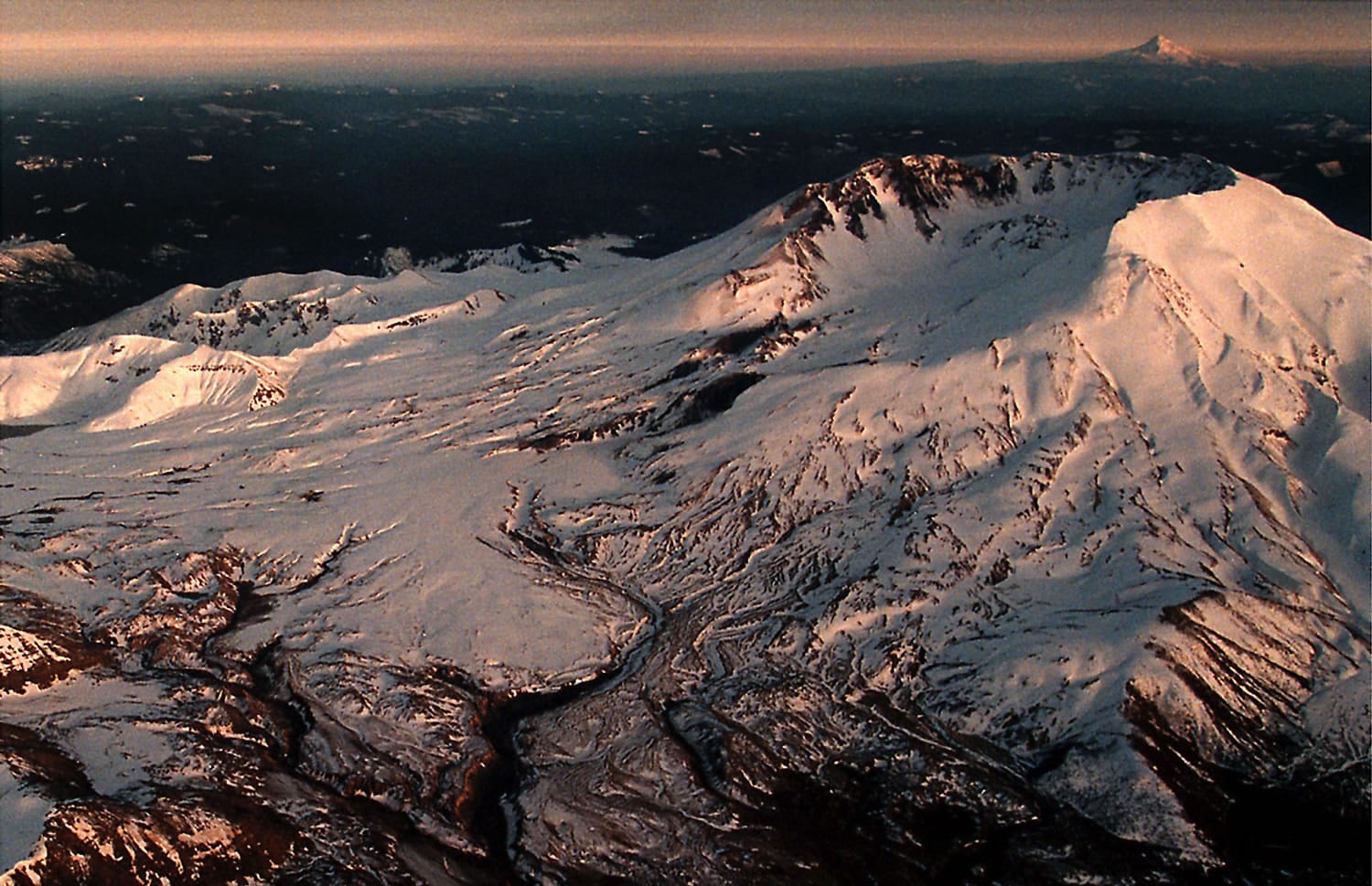• High-explosivity events are often referred to as Plinian eruptions. They are named after Pliny the Younger, who described the eruption of Mount Vesuvius that destroyed the Roman city of Pompeii almost 2,000 years ago. During these eruptions, large amounts of magma are ejected into the atmosphere at high velocity — such as Mount St. Helens in 1980 and Mount Pinatubo in 1992.
The blast-fractured summit of Mount St. Helens dominates Clark County’s skyline to the north.
From other vantage points, the white-capped slopes of Mount Hood loom over the horizon to the southeast.
The two Cascade volcanoes have similar rock compositions, and the gases that are part of their eruptive phases are the same.
But Mount Hood is unlikely to adopt Mount St. Helens’ profile any time soon: The reason appears to be temperature.
New research indicates that a mixture of hotter and cooler magma is the reason Mount Hood has not had a large explosive eruption in the last 500,000 years.
The study, done by a team that includes two Oregon State University scientists and a Vancouver-based geologist, has just been published online in the Journal of Volcanology and Geothermal Research.
Volcanic eruptions are usually described as “high-explosivity” or “low-explosivity” events, said lead author Alison Koleszar, a researcher at Oregon State University.
Many volcanoes show evidence of both types of eruptions. But studies of the rocks around Mount Hood show that it has never experienced a high-explosivity eruption, despite having similar chemical magma composition and gas contents as other volcanoes with violent pasts.
Koleszar says it’s because eruptions at Mount Hood appear to be preceded by episodes of intense mixing between magmas of different temperatures. Hot magma rises from deep below Mount Hood and mixes with the cooler magma closer to the surface. The deeper, hotter magma raises the temperature and thins the magma that eventually erupts.
A computer model suggests that a temperature increase of 100 degrees Celsius will significantly delay an explosive eruption.
Magma at Mount Hood oozes out the top of the volcano and piles up to form a lava dome. It’s not the sort of cataclysmic blast that ripped apart Mount St. Helens.
Although … “We never like to say never,” co-author Willie Scott made sure to point out.
“We look to see what it has done in the past,” said Scott, a geologist based at the Cascade Volcano Observatory in Vancouver.
Mount Hood’s history indicates that “it grows lava flows or lava domes,” Scott said. “We see that repeated, with no evidence of highly explosive eruptions.”
The scientists were able to determine the temperature of the flowing magma by looking at crystal patterns in lava from the most recent eruptions, Koleszar said.
It’s much harder to analyze why the magma mixing is happening miles below Mount Hood. From a plumbing standpoint, it’s tough to analyze why Mount Hood doesn’t act like its Cascade cousins, said Oregon State scientist Adam Kent.
Mount St. Helens has its own claim to fame, by the way.
“In terms of the Cascades, Mount St. Helens is quite special in its frequent eruptions,” Scott said. “These volcanoes will remain quiet for thousands of years. Of all the Cascade volcanoes, St. Helens is in this period of frequent eruptions. It’s been going great guns for the past 4,000 years. For the others, there have been thousands of years since the last significant eruption.”
Mount Hood’s low-explosive history doesn’t mean it’s harmless. It still represents a landslide threat. It’s also unleashed lahars — major mudflows with the consistency of cement that stream down the mountain’s slopes at 50 mph.
“About 100,000 years ago, Mount Hood had large debris avalanche to the north and a lahar crossed the Columbia River at Hood River,” Scott said. “It filled the Columbia River valley 200 feet deep and started flowing up the White Salmon valley.”
Scott says the researchers’ conclusions provide a strong hypothesis for the difference between Mount Hood and Mount St. Helens.
“It will be a topic of further debate,” Scott said. “In science, everything is always a work in progress. But it’s an interesting way of explaining why Mount Hood behaves the way it does.”
Tom Vogt: 360-735-4558; http://www.twitter.com/col_history; tom.vogt@columbian.com.




